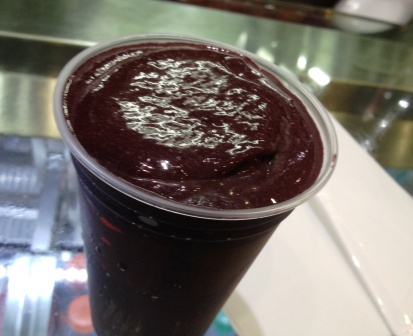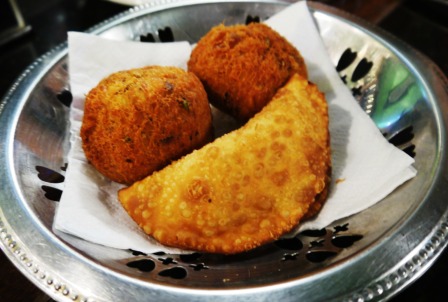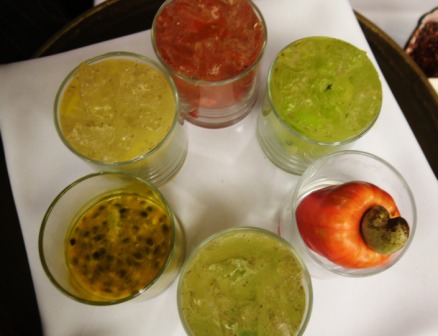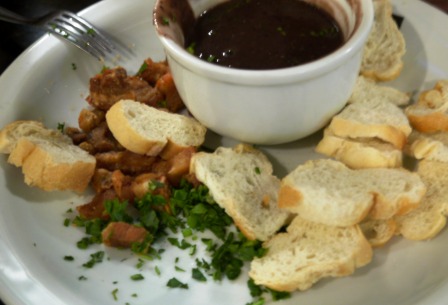What comes to mind when you think of Brazilian food? For me, it is all kinds of grilled meats on skewers with little seasoning. But after visiting Rio de Janeiro, I have come to learn that there is much more to the cuisine here than beef, lamb and chicken. The food in Rio actually has a lot more variety and specific specialties that cannot be found anywhere else in the world. While I walked around the city in search of food, I discovered that there are a few things you must try when you visit Rio.
1. Acai berry juice – Acai berries are grow in the Amazon rain forests of Brazil and is a high source of anti oxidants, fiber and iron. There are juice bars practically at every corner, serving fresh fresh juice made with mangoes, papayas, oranges, pineapples and more. The cost is $2-3/ glass so enjoy several times a day.
2. Pastel – South American empanada style pastry stuffed with shrimp, cheese or meat and deep fried. Pastel is eaten as an appetizer and snack at almost all restaurants in Rio. It is also found on the streets and is perhaps the cheapest snack.
3. Cod fish fritters – I do not understand the Cariocas (Rio people) obsession with cod, a salty fish imported from Europe at exorbitant prices. The most popular way to eat it is as deep fried fish ball fritters but it is also found in all Portuguese menus. It tastes very similar to canned tuna.
4. Caipirinha – A cocktail prepared with sugar, lemon and cachaça (Brazilian rum made from sugar cane) is a popular Brazilian drink worth trying. It served with an addition of fruit pulp – kiwi, passion fruit, lemon, cashew, etc. depending on what the restaurant has fresh at the time. Caipirinha is smooth but strong, so pace yourself well.
5. Feijoada – Black beans simmered with ham to make a soup. It is served with bacon croutons, bread and various other toppings. The feijoada can be eaten as a starter or a side item.
Brazilian cuisine differs significant from north to south. Spices are more abundantly used in the north, whereas in the south, the dishes are Portugal influenced. Also, the immigrants from Italy, Germany, Japan and neighboring South American countries has had a strong influence on the cuisine. It is common to see American, Lebanese and sushi restaurants all over the city.



